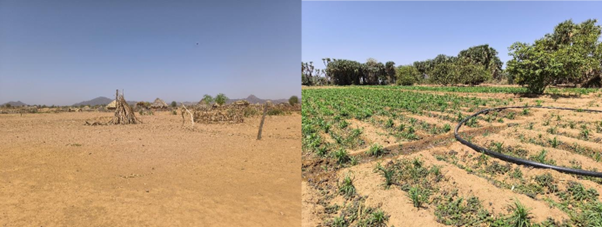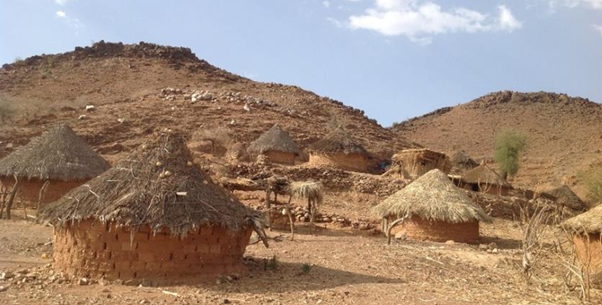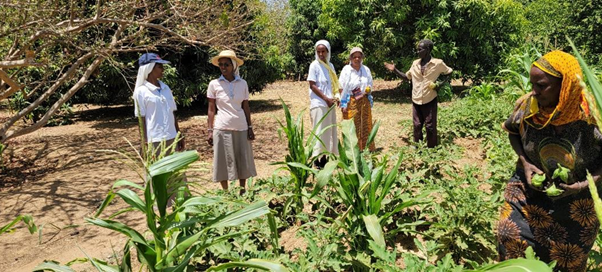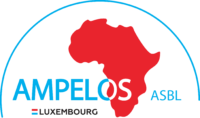Eritrea
Our ongoing reforestation project in Eritrea
- Establish gardens and orchards to fight desertification and erosion.
- Involve the entire community in the cultivation and care of plants.
- Teach practical gardening skills and nutrition to ensure sustainability.
- Improve food security by growing fruit and vegetables for local consumption and sale

The region:
Gash Bark a region is the largest region in Eritrea, geographically located on the border with Ethiopia and Sudan. It is divided into 14 provinces and has as many as 680 villages. The capital of the region is Barentu, where the Eparchy headed by Monsignor Thomas Osman, a Capuchin bishop, is based. The population reaches about 850,000 and includes eight of the nine Eritrean ethnic groups. About 85 percent of the inhabitants make their living from agriculture and pastoralism; the Gash Barka region is potentially the most fertile and richest in Eritrea. The climatic conditions in the region are difficult, as they see alternating long periods of drought, with heavy rains that cause dangerous rises in river levels.
Local Situation:
The Cunama and the Nara Two different groups, the Cunama and the Nara, live in the Gash Barka region in the western lowlands bordering Sudan and Ethiopia.
The Cunama are thought to be the first inhabitants of this territory. They are mainly farmers, cultivating the land with simple spades; they also practice hunting. Their main source of livelihood is livestock, which gives wealth and prestige. Cunama society is democratic. The elders, who are held in high esteem, make the most important decisions after endless discussions under the shady trees.
The social structure of the Cunama is matriarchal, but this is an ambiguous term because even though practical Cunama life is sustained solely by women: women cultivate their farms; women collect wood; women go to the market; women keep house, care for children, and go for water, authority is exercised by the elderly men.
Social life is very intense, which explains why the Cunama do not like to stray far from home. Much of the cultivation is managed by the community, and once the daily work is done, they relax by singing and dancing. The Cunama are renowned dancers, and have developed more than 25 types of dances. Often, these dances are representations of historical events.
The Nara originally had a culture similar to that of the Cunama, and their economic base, mixed agriculture with a strong interest in livestock, remained the same. In the mid-1800s the Egyptians converted them to Islam, and the family structure changed from matriarchal to patriarchal. For thousands of years, Eritrea was a melting point of migrants from Arabia.
Gash Bark a region is the largest region in Eritrea, geographically located on the border with Ethiopia and Sudan. It is divided into 14 provinces and has as many as 680 villages. The capital of the region is Barentu, where the Eparchy headed by Monsignor Thomas Osman, a Capuchin bishop, is based. The population reaches about 850,000 and includes eight of the nine Eritrean ethnic groups. About 85 percent of the inhabitants make their living from agriculture and pastoralism; the Gash Barka region is potentially the most fertile and richest in Eritrea. The climatic conditions in the region are difficult, as they see alternating long periods of drought, with heavy rains that cause dangerous rises in river levels.
Local Situation:
The Cunama and the Nara Two different groups, the Cunama and the Nara, live in the Gash Barka region in the western lowlands bordering Sudan and Ethiopia.
The Cunama are thought to be the first inhabitants of this territory. They are mainly farmers, cultivating the land with simple spades; they also practice hunting. Their main source of livelihood is livestock, which gives wealth and prestige. Cunama society is democratic. The elders, who are held in high esteem, make the most important decisions after endless discussions under the shady trees.
The social structure of the Cunama is matriarchal, but this is an ambiguous term because even though practical Cunama life is sustained solely by women: women cultivate their farms; women collect wood; women go to the market; women keep house, care for children, and go for water, authority is exercised by the elderly men.
Social life is very intense, which explains why the Cunama do not like to stray far from home. Much of the cultivation is managed by the community, and once the daily work is done, they relax by singing and dancing. The Cunama are renowned dancers, and have developed more than 25 types of dances. Often, these dances are representations of historical events.
The Nara originally had a culture similar to that of the Cunama, and their economic base, mixed agriculture with a strong interest in livestock, remained the same. In the mid-1800s the Egyptians converted them to Islam, and the family structure changed from matriarchal to patriarchal. For thousands of years, Eritrea was a melting point of migrants from Arabia.

The village of Kulluku
Kulluku is a Cunama village in the Eritrean lowlands located on the Gash River a short distance from the Sudan border. Kulluku is in a desert area, consisting in a group of huts with a hundred families having an average of 6/7 members each. There is no infrastructure there is only a small dispensary. It is not mentioned among the Gash Barka districts because it is located in an inland area. It takes about 10 hours by road to reach Kulluku from Asmara.
The Cunama people who inhabit the area are mostly Christian, which is why there is a small church there. II nearest market is in Barentu, 45 kilometers away, but it takes an hour's tight road to reach it.
The Combonian mission was established among the Cunama people in 2012. The people are very happy with our presence and expect a lot from us. The community consists of three sisters carry out catechetical activities and promotion of women. Unfortunately, after the nationalization of schools, we can no longer have the kindergarten. But the mission yard is always crowded.
With the help of the Terrarossa Association in recent years important social works have been done:
- Cistern: Given the scarcity of water and the distance to find it, a cistern was built to collect rainwater and a second one is currently being built. A true blessing.
- Multifunctional Hall: with Terrarossa and other associations it was possible to build a Multifunctional Hall...a real gymnasium where children, mothers, young people take turns in almost daily use with various activities promoted by the sisters. This facility also has the privilege of protecting the children and women from the heat, which in the area ranges from a low of 30/35 degrees to 40/45 degrees.
- Purchase of animals for families: purchase of donkeys to relieve women from carrying heavy barrels of water on their shoulders: baby goats for needy families
- Literacy for Cunama adults: the Project called “For whom the bell tolls,” serves to teach the Tigrinya language to Cunama adults to help them fit into the Eritrean social context.

